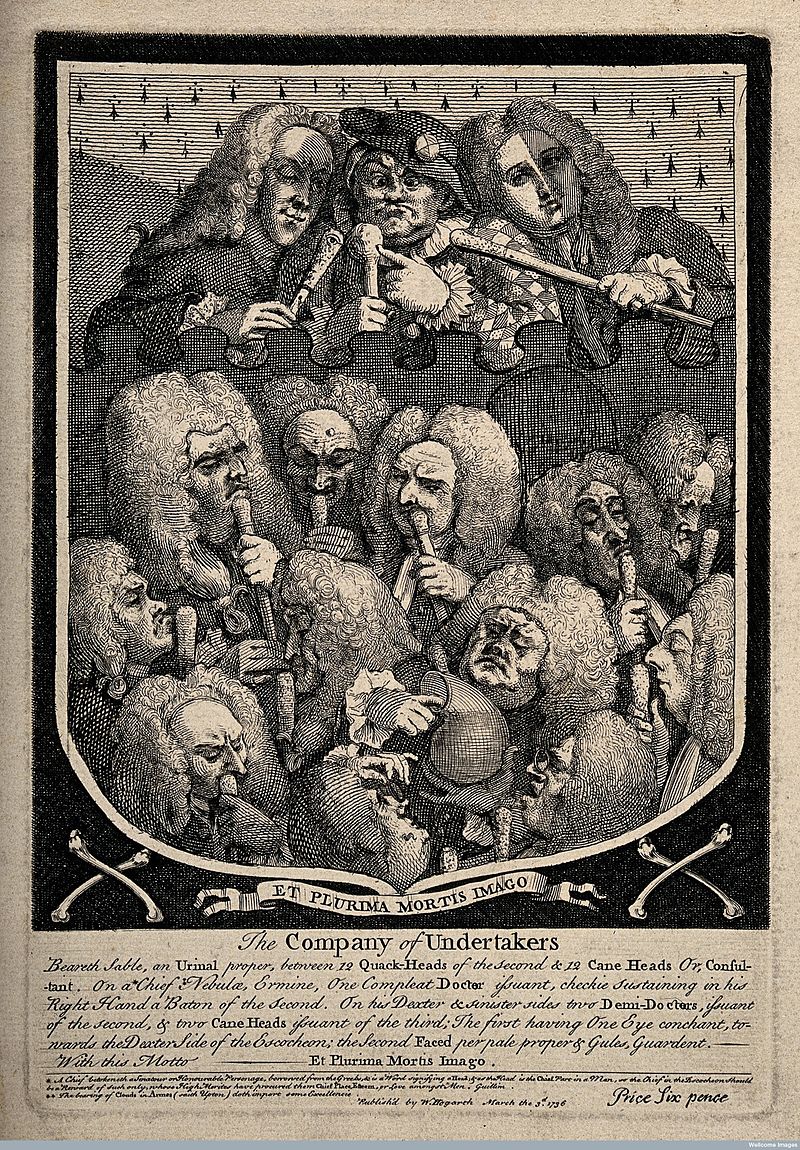
 British comic theatrical genre developed in England between the 17th and mid-19th centuries. costume, by the caricaturist George Cruikshank.
British comic theatrical genre developed in England between the 17th and mid-19th centuries. costume, by the caricaturist George Cruikshank.Wikimedia Commons
Sarah Mapp, née Wallin, (bap. 1706 – 1737) was an English woman who for a time enjoyed much popular fame and not inconsiderable wealth for her skill as a bone-setter,[a]The term bone-setter is now largely historical, referring particularly to those like Sarah, without medical qualifications;[1] until the late 19th century all women were excluded from entry into medical schools.[2] treating dislocations and fractures of bones and other musculoskeletal conditions. Nicknamed “Crazy Sally”, at the height of her popularity she was earning almost 20 guineas a day, about 200 times the daily rate of a general labourer, and equivalent to more than £3,000 a day as at 2020.[3][4][b]Using the retail price index measure of inflation.[5]
Sarah was born in Hindon, Wiltshire,[6] the daughter of John Wallin and his wife Jenny.[3] John Wallin was an itinerant bone-setter, and employed Sarah as an announcer for his booth at fairs and race meetings in Wiltshire. During his absences Sarah assumed the role of treating their customers, and proving to be more successful than her father soon set up in practice on her own, under the name of “Cracked Sally – the One and Only Bone Setter”.[6]
In about 1735 Sarah took a house in Epsom, Surrey, where the horse-racing “produced a useful crop of mangled bones”. She immediately gained a reputation for setting fractures and righting dislocations, even in patients who had been suffering for years. By mid-1736 Sarah had earned sufficient to allow her to acquire a coach and horses, which she used to travel to London one day a week. There she set up shop at the Grecian Coffee House near the Temple, where she performed some noteworthy feats in the presence of the eminent physician Sir Hans Sloane,[c]Sir Hans Sloane conducted his own private practice from the Grecian Coffee House.[3] including straightening the crooked back of Sloane’s niece. Sarah’s demonstration of the poor understanding among physicians of bone manipulation did not make her a universally popular figure among the medical profession. On one occasion a group of doctors attempted to expose her by sending her a sound patient who pretended to have a damaged wrist; on spotting the deception, Sarah angrily dislocated his wrist and told him to go back and “have it set by the fools who had sent him”.[3]

Wikimedia Commons
After moving to London in 1736 Sarah married Hill Mapp (b. 1708), a footman. Given Sarah’s slovenly and unprepossessing appearance – “beefy and endowed with unusual strength” – Mapp was generally assumed to have married for money, and so it proved. The marriage lasted for only two weeks, after which Mapp absconded with more than 100 guineas he had stolen from Sarah. Her almost meteoric fall from grace began a month later, when the Grub Street JournalWeekly satirical newspaper published from 1730 until 1737., in its crusade against quack doctors, began to ridicule her in its pages. The satirist and social critic William Hogarth contributed to her downward spiral by featuring her in his print of The Company of Undertakers Engraving by William Hogarth satirising 18th-century physicians. (1736).[3]
Engraving by William Hogarth satirising 18th-century physicians. (1736).[3]
Sarah subsequently began to drink heavily, and died on 10 December 1737 in her lodgings at Seven Dials, London, “miserably poor”; she was buried at the parish’s expense.[3]
Notes
| a | The term bone-setter is now largely historical, referring particularly to those like Sarah, without medical qualifications;[1] until the late 19th century all women were excluded from entry into medical schools.[2] |
|---|---|
| b | Using the retail price index measure of inflation.[5] |
| c | Sir Hans Sloane conducted his own private practice from the Grecian Coffee House.[3] |
